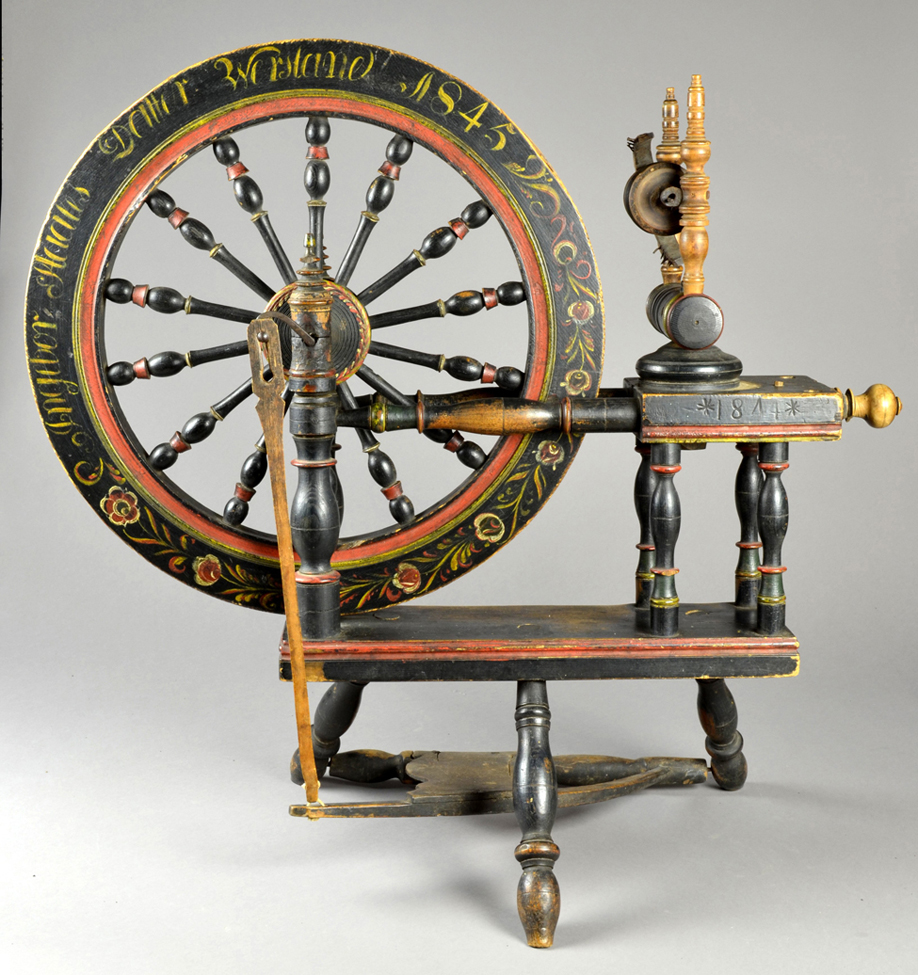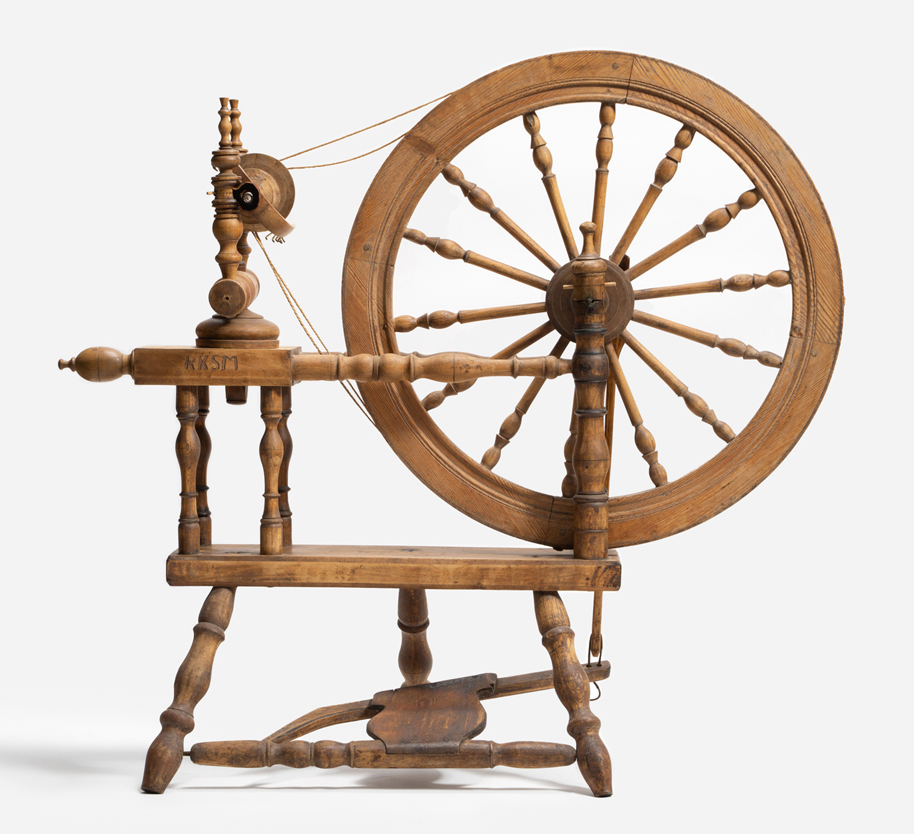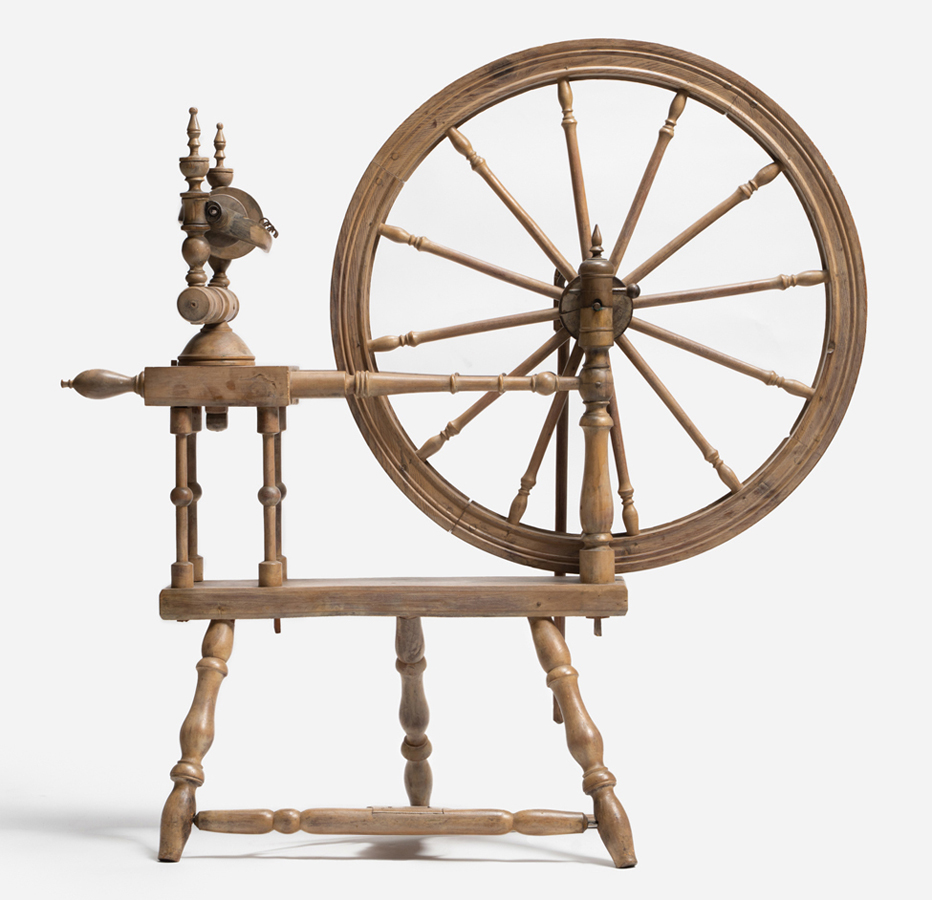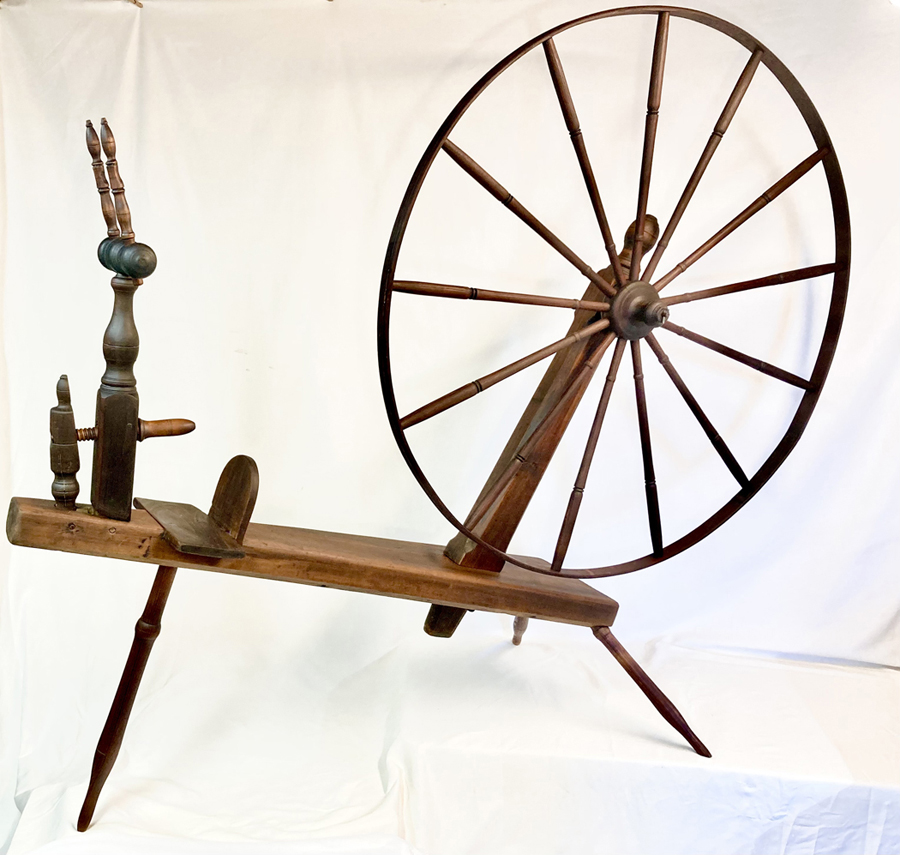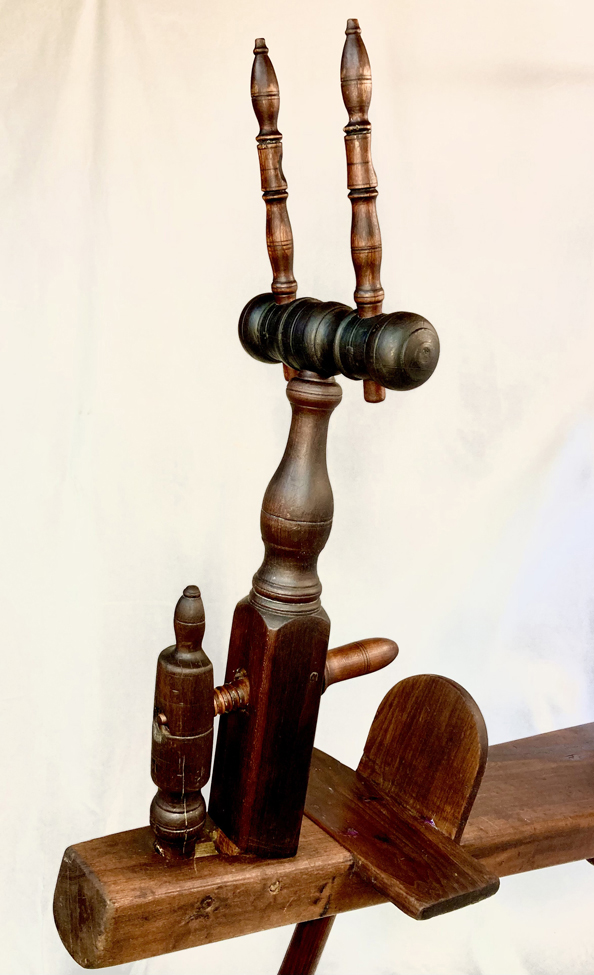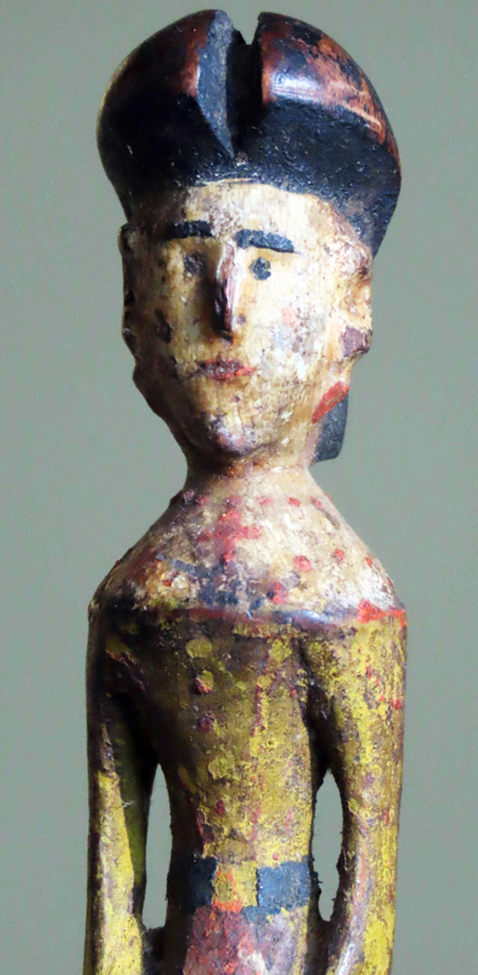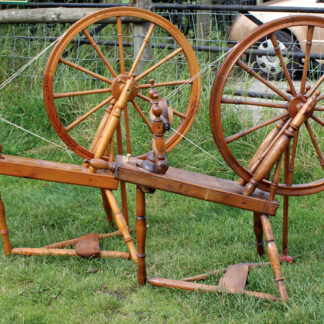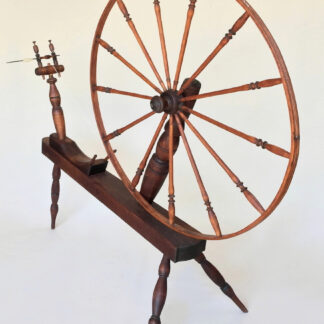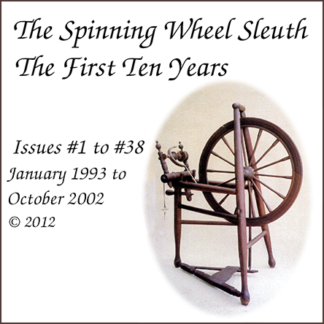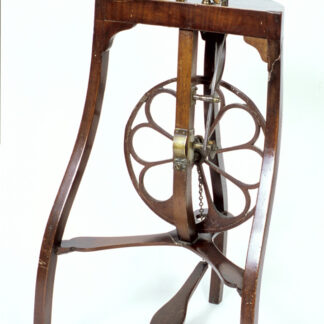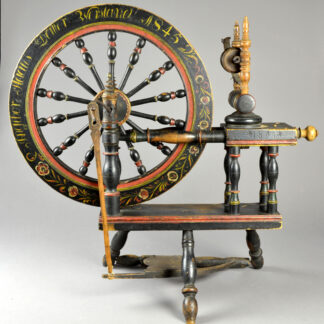Description
Highlights From This Issue
Hard to believe that we are beginning our 30th year. Even though we have learned a great deal over that time, our contributors continue to discover more fascinating material about spinning wheels and related tools. In this issue we travel first to Moi, Norway, the home of a style of wheel that was built there and later imported to the United States. A type of great wheel has been traced to the southeastern part of the United States and may have been used by the indigenous people during the first quarter of the 19th century. A distaff in the shape of a female figure, possibly from Italy, is presented.
Spinning Wheels From Moi, Norway
Laurann Gilbertson, chief curator at Vesterheim Norwegian-American Museum in Decorah, Iowa, discovered that some of the spinning wheels in their collection were made in Moi, Norway. With help from Per Christoffer Salvesen, she learned about the craftsmen who worked in Moi in the second half of the 19th century. In the first part of the 20th century, spinning wheels built in factories there were imported to the United States by Alfred Andresen. She describes their characteristics and history.
A New Echota Great Wheel
In the course of researching tension devices on great wheels, Enrica McMillon noticed a few that have different features from most others. They appeared to originally be from the southeastern states. Examples of this type of wheel are found in the New Echota Georgia State Historic Site, along with artifacts from the Cherokee nation and other tribes, so Ravelry members are calling them New Echota great wheels. Historic documents may relate them to textile production among the tribes between 1796 and the 1830s.
The Distaff Is a Woman
The distaff Brenda Page bought on eBay was supposedly from Italy. It is in the form of a female figure with wonderful details. Researching it led Brenda to a Web site showing spindles and distaffs in the collection of the University of Innsbruck and a recent book. This unique distaff could be Greek, but it might be from southern Italy.

